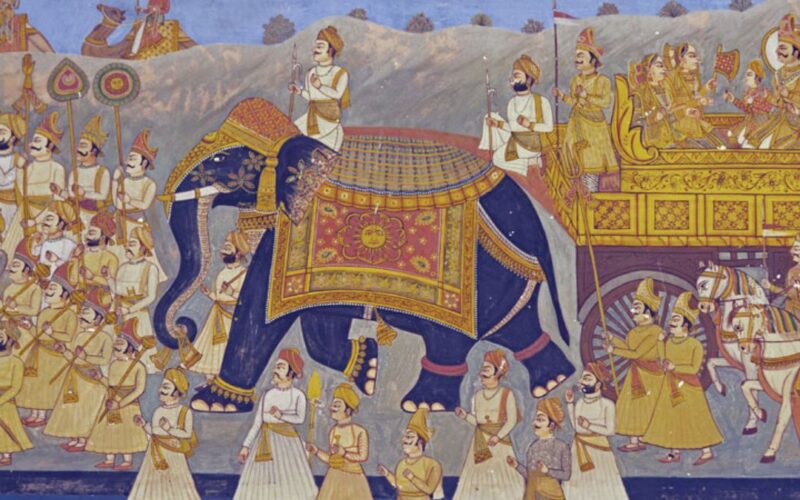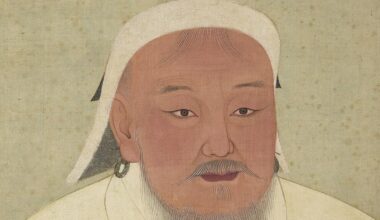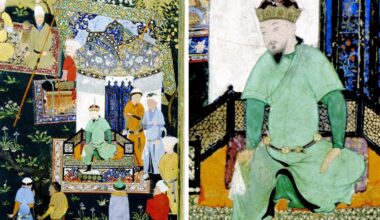The Mughal Empire, established by Babur in the 16th century, cast a long shadow over the Indian subcontinent. For nearly three centuries, the Mughals dominated the political landscape, wielding immense military power and fostering a vibrant cultural exchange. However, their reign was not without its challengers. Throughout their rule, the Mughals faced persistent resistance from various Hindu kingdoms and generals. This article delves into this captivating saga, exploring the strategies, victories, and enduring legacy of these defiant figures.
The Rajputs Forge a Resistance
The arrival of the Mughals in the early 16th century coincided with a period of relative disunity among the Rajput clans of northern and western India. However, the prospect of a powerful Muslim empire on their doorstep spurred these Rajput kingdoms to forge a loose alliance known as the Rajput Confederacy. Rana Sanga of Mewar emerged as a formidable leader within this confederacy. A skilled military strategist, he united a vast Rajput army to confront Babur at the decisive Battle of Khanwa in 1527.
The battle itself was a clash of titans. Rana Sanga’s colossal Rajput army, numbering over 100,000 strong, initially overwhelmed the Mughals. However, Babur’s superior tactics and the decisive use of mobile artillery, a relatively new technology at the time, turned the tide. The Rajput charge faltered, and despite their initial advantage, they suffered a crushing defeat. The Battle of Khanwa marked a significant setback for Rajput ambitions, but it did not extinguish the spirit of resistance.
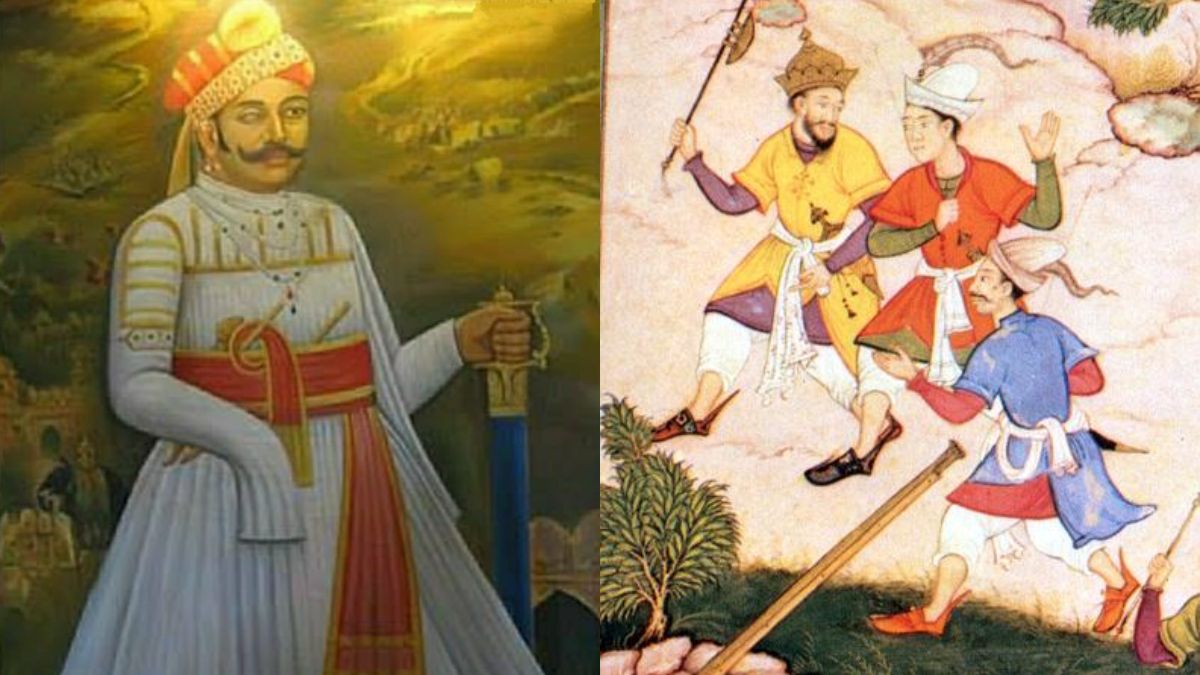
Maharana Pratap’s Unyielding Stand
Akbar, Babur’s grandson, ascended the Mughal throne in 1556, inheriting a vast but still consolidating empire. Akbar’s expansionist policies brought him into direct conflict with Maharana Pratap of Mewar, another legendary Rajput figure. Unlike some Rajput rulers who chose to submit to Mughal authority, Pratap refused to acknowledge Mughal suzerainty. This defiance sparked a protracted conflict that stretched over two decades, becoming a defining chapter in Rajput history.
The pivotal event of this conflict was the Siege of Chittorgarh in 1568. Akbar, determined to subdue the defiant Rana, laid siege to the formidable Mewar fort of Chittorgarh. The siege lasted for months, showcasing the immense courage and sacrifice of the Rajput defenders. However, facing overwhelming Mughal forces and dwindling supplies, the fort eventually fell. The fall of Chittorgarh was a devastating blow for Mewar, but it did not break Maharana Pratap’s resolve.
Pratap, refusing to surrender his ancestral lands, retreated into the Aravalli Hills and adopted guerilla warfare tactics. His small but mobile Marwar cavalry forces continuously harassed Mughal supply lines and outposts, inflicting significant damage. The conflict, though never resulting in a decisive battle, bled the Mughal treasury and became a symbol of Rajput resistance. Maharana Pratap, despite never fully regaining his lost territories, became an enduring icon of Rajput valor and unwavering defiance.

The Rise of the Marathas and a New Era of Resistance
While the Rajputs played a crucial role in challenging Mughal dominance in the north, the 17th century witnessed the rise of a new power in the Deccan region – the Marathas. Founded by Shivaji Bhonsle, a charismatic leader with a keen understanding of warfare, the Maratha Empire emerged as a formidable force against the Mughals. Unlike the set-piece battles favored by the Mughals, Shivaji employed innovative guerilla tactics, later known as Maratha warfare.
Maratha armies were known for their mobility and speed. Lightly armored but highly trained soldiers, often mounted on swift horses, could launch surprise attacks on Mughal outposts, disrupt communication networks, and raid strategic locations. One of Shivaji’s most audacious exploits was the 1664 sack of Surat, a major Mughal port city on the west coast. This daring raid not only netted the Marathas significant booty but also dealt a severe blow to Mughal prestige and disrupted their trade routes.
The Underlying Motivations for Resistance
The resistance of Hindu kings and generals to Mughal rule stemmed from a complex interplay of factors that transcended mere territorial disputes. While the Mughals, by and large, pursued a policy of religious tolerance, their imposition of the jizya, a tax on non-Muslims, was viewed by some Hindu rulers as discriminatory. Additionally, the cultural assimilation policies of some Mughal emperors, particularly the early ones, caused friction with those who cherished their distinct Hindu traditions. For instance, Akbar’s attempts to blend Hinduism and Islam into a new religion, Din-i-Ilahi, met with resistance from orthodox Hindus who viewed it as a dilution of their faith. These religious and cultural concerns fueled the flames of resistance alongside the desire to preserve political autonomy.
Impact on Indian History
The resistance of Hindu kings and generals had a profound and lasting impact on the course of Indian history. It prevented the Mughals from achieving complete domination of the subcontinent and ensured the survival of distinct Hindu identities within the Mughal Empire. The courage and leadership of figures like Rana Sanga, Maharana Pratap, and Shivaji became a source of inspiration for future generations of Indian nationalists who fought against colonial rule.
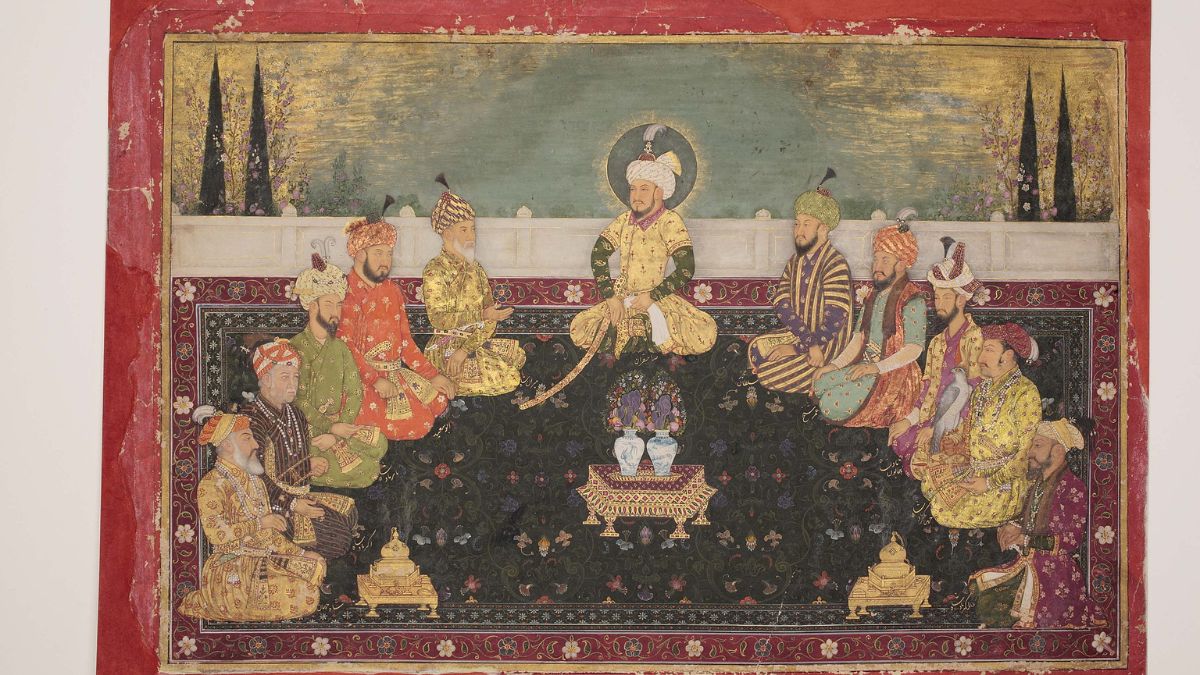
The Cultural and Social Dimensions of Resistance
The defiance against the Mughals extended beyond the battlefield. Hindu intellectuals and religious leaders also played a crucial role in preserving and promoting Hindu culture. Literary works in various regional languages flourished, celebrating Hindu traditions and epics. Additionally, the Bhakti movement, a devotional movement that emphasized personal devotion to a chosen deity, gained momentum during this period. This movement, led by charismatic saints like Tulsi Das and Mirabai, provided an emotional outlet for the populace and helped to strengthen Hindu identity.
The Mughal Response: Adaptation and Accommodation
Faced with persistent resistance, the Mughals adopted a nuanced approach. Akbar, known as the “Great Mughal,” pursued policies of religious tolerance and integration. He married Rajput princesses, incorporated Hindus into his administration, and even abolished the jizya for a period. This policy of accommodation helped to create a period of relative peace and prosperity within the empire.
However, later Mughal emperors, facing internal rebellions and financial constraints, were less tolerant. Aurangzeb, the last powerful Mughal emperor, reimposed the jizya and adopted a more aggressive policy towards non-Muslims. This shift in policy alienated many Hindu rulers and contributed to the decline of the Mughal Empire in the 18th century.
A Tapestry of Conflict and Coexistence
The relationship between the Mughals and Hindu kingdoms was complex, marked by both conflict and coexistence. The resistance of Hindu kings and generals played a significant role in shaping the political landscape of Mughal India. Their defiance not only preserved Hindu political entities but also fostered a sense of cultural identity that continues to resonate in modern India. The story of the Mughals and their Hindu adversaries is a testament to the rich tapestry of Indian history, where diverse cultures, religions, and political ambitions intertwined to create a dynamic and ever-evolving society.
